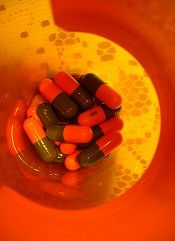
Photo by Zak Hubbard
Researchers say they have uncovered hydroxyurea’s main mechanism of action in sickle cell disease (SCD).
The drug’s mechanism has been a topic of debate, with some researchers claiming hydroxyurea works by reactivating fetal hemoglobin and others saying it increases the volume of red blood cells (RBCs), thereby reducing the concentration of sickle hemoglobin.
Now, research published in PNAS suggests the latter mechanism is the dominant one.
“Our findings shine a light on the mechanism behind hydroxyurea action, which has long been debated in the scientific community,” said study author Ming Dao, PhD, of the Massachusetts Institute of Technology in Cambridge.
“It’s exciting to see that, using the latest optical imaging tools, we can now confirm which one is the dominating mechanism. Understanding the key mechanism of action will allow us to explore novel and improved therapeutic approaches for sickle cell disease.”
For this study, the researchers analyzed blood samples from patients with SCD.
The team used common-path interferometric microscopy to assess the biophysical properties (shape, surface area, and volume) and biomechanical properties (flexibility and stickiness) of RBCs.
The researchers separated RBCs into 4 groups based on their density. Normal, disc-shaped cells were the least dense, while severely sickled cells were the densest.
The team then compares samples from patients who were taking hydroxyurea and those who were not.
The RBCs of patients receiving treatment showed an improvement in all of the biophysical and biomechanical properties tested across all density levels.
Improvement in the physical properties of RBCs from patients treated with hydroxyurea correlated more with an increase in RBC volume than with levels of fetal hemoglobin.
The researchers hope these biophysical markers can be combined with biochemical and molecular-level markers to assess the severity of a patient’s disease, determine whether or not a patient will respond to hydroxyurea, and monitor the effectiveness of that treatment.
“There is a critical need for patient-specific biomarkers that can be used to assess the effectiveness of treatments for sickle cell disease,” said study author Subra Suresh, ScD, of Carnegie Mellon University in Pittsburgh, Pennsylvania.
“This study shows how techniques commonly used in engineering and physics can help us to better understand how the red blood cells in people with sickle cell disease react to treatment, which could lead to improved diagnostics and therapies.”


